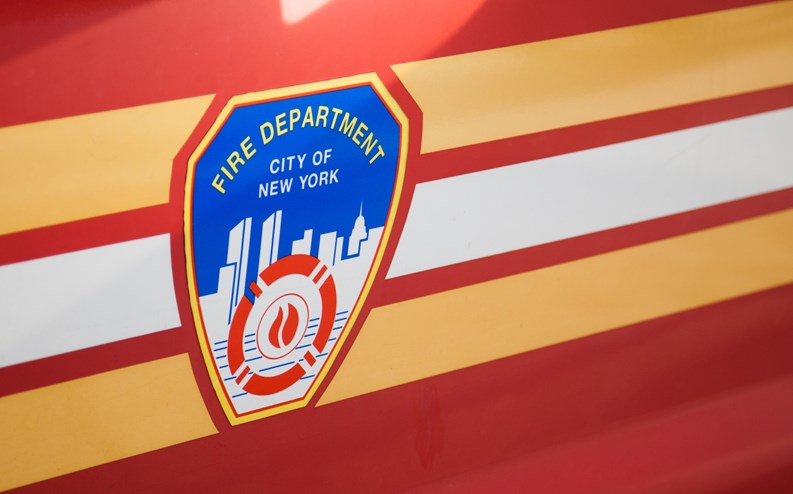The New York City Fire Department (FDNY) recently passed new rules affecting many multi-family dwellings in the city. As reported in Habitat last month, duplexes and triplexes were required to install reflective signage on apartment and stairwell doors in an effort to better assist first responders by March 30th of this year. Buildings with single-level apartments are mandated to follow suit by that same date in 2018.
Purpose of the New Rules
Placed at door jambs, the signs are meant to assist firefighters when crawling through smoky conditions with low or no visibility. The signs are to indicate the apartment number; whether the apartment is a duplex or a triplex; whether there is more than a single entrance; and whether a particular entrance is the primary one.
Among some of the highlights from the new FDNY guidelines include:
Dwelling unit entrance door identification: “The entrance door marking or sign identifying the room number and/or letter shall be conspicuously and durably printed or posted on or adjacent to the entrance door, on the public corridor side of the door. The marking or sign letters and numbers shall be at least 48 inches, but not more than 60 inches, above the floor.”
Building lobby and hallway corridor directional markings or signs: “...in a Group R-1 and Group R-2 building or occupancy with more than eight (8) dwelling units on a floor, a marking shall be placed or a sign posted in a conspicuous location in the elevator lobby or other public entry on each floor, and in the public corridor opposite each stairwell entrance...The marking or sign shall identify by directional arrows and dwelling unit numbers and/or letters, the direction to each dwelling unit...If dwelling units are located on more than one corridor, directional markings or signs shall be provided at each location where the corridor from the stairwell intersects with another corridor.”
Apartment and guest room identification: “The fire emergency marking letters and/or numbers shall not be more than 12 inches above the floor. The uppermost character or symbol shall be positioned with its top edge at 12 inches above the floor with the remaining characters and symbols placed below.”
The Property Manager's Perspective
Valon Rexhepi, a property manager with the Manhattan-based Pride Property Management Corp., dug deeper into the intricacies of the new rules. “In many instances when new laws pass for a co-op or condo, it takes some time to fully understand their purpose and requirements,” Rexhepi acknowledges. “And there was some confusion when we were first informed of the rules in question, as it wasn't clear if all co-ops and condos needed to comply, and many signage companies were caught off guard. At first, many companies to which I reached out were unable to provide us with the required signs, and others suggested that not all co-op and condos buildings fall under the rule.
“After some extensive research, we got the necessary clarification,” Rexhepi continues. “The rule applies to two types of multi-family dwellings: R-1 (transient) and R-2 (permanent), that are not fully sprinkled. Signs have to be installed in buildings and occupancies with nine or more apartments [on a floor]. Floors with eight or fewer apartments and buildings that are fully sprinkled are exempt from the rule.”
Rexhepi believes the new rule is great for residents’ safety, and that it should apply to all multifamily dwellings. “Another good thing is that you can get the signs in different colors, such that you can match with the unit door, as long as they are photo-luminescent or retro-reflective.”
Gail Wainer, director of property management at Wallack Management in New York City, says that it really wasn't all that difficult to take care of all the duplexes and triplexes. “We just didn't have a lot of time to let our boards or residents, who were getting these things put on their doors, to know too far in advance, if we wanted to stay compliant and not be subjected to any fines from the FDNY,” she says. “Plus, if the FDNY feels as if something is best for the safety of first responders, then we always want to make sure that we're helping in whatever way it takes for them to do their jobs and protect residents.”
Wainer feels that it's the responsibility of management to advocate for the compliance of city codes and mandates that aim to benefit the greater good, even when there is push-back from an association. “Were we to encounter a board that wished to opt out, we would have them put it in writing that should there be some consequence, it was not the decision of the management company to fail to comply with the rules,” she says. “But that just doesn't happen. We're at the front lines, and we have boards that tend to comply. But that said, they're smart. They want to know the reasons. They don't want to do something just because we say so. They're not kindergartners.”
Mike Odenthal is a staff writer at The Cooperator.







Comments
Leave a Comment